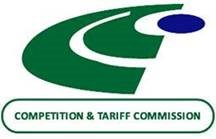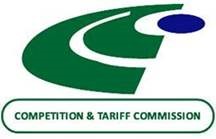
The Role Of Trade Tariffs In Shaping The African Continental Free Trade Area (Afcfta) Implementation
ARTICLE
THE ROLE OF TRADE TARIFFS IN SHAPING THE AFRICAN CONTINENTAL FREE TRADE AREA (AFCFTA) IMPLEMENTATION
The African Continental Free Trade Area (AfCFTA) is the world’s largest free trade arrangement by membership, bringing together 54 African Union member states, excluding Eritrea, which has not yet joined. Its objective is to create a single continental market for goods and services, enhance intra-African trade, and foster industrialisation. Tariffs play a pivotal role in implementing AfCFTA, as their reduction and eventual elimination are key to promoting freer trade across the continent. Historically, African economies have relied heavily on tariffs both as a source of government revenue and as a means of protecting local industries from external competition. High tariff barriers, coupled with complex customs procedures, have significantly limited intra-African trade, which has long hovered around 15–18% of total trade compared to over 60% in the European Union. Tariffs raise the cost of cross-border trade, discourage regional value chains, and make African products less competitive within the continent.
Tariff Modalities under AfCFTA
Under the AfCFTA agreement, member states have agreed to the following categorisation of goods:
• Non-sensitive products (90% of tariff lines): which will be progressively liberalised over five years for non-Least Developed Countries (non-LDCs) and ten years for Least Developed Countries (LDCs). Zimbabwe, classified as a non-LDC, has included raw materials, capital goods, and products not manufactured locally, among other items, in this category.
• Sensitive products (7% of tariff lines): These products will be liberalised over a longer period: 10 years for non-LDCs and 13 years for LDCs. Zimbabwe has included items such as meat carcases, dairy products, pasta, plastics, wood, paper, certain fabrics, clothing, footwear, ceramics, some cooking oils, cartons, wheelbarrows, spades, and shovels in its sensitive list.
• Excluded products (3% of tariff lines): These goods are fully excluded from liberalisation, allowing countries to protect critical industries. Zimbabwe has placed certain cooking oils, sugar, beverages, tobacco, cigars, cement, cotton fabrics, freezers, furniture, and arms and ammunition in this category.
This phased approach ensures that trade liberalisation occurs gradually while cushioning vulnerable economies and industries from abrupt exposure to competition. LDCs have longer phase-down periods than non-LDCs to account for differing levels of development.
Benefits Arising from Trade Tariffs in AfCFTA Implementation
▪ Promoting Intra-African Trade
Tariff reductions under AfCFTA lower cost of cross-border transactions, making African goods more affordable within the continent. This increases demand for locally produced goods and reduces dependence on imports from outside Africa. E.g., tariff liberalisation allows Zimbabwean beverages, ceramics, processed foods, and building materials to enter regional and continental markets more competitively, strengthening their presence within SADC, COMESA, and Africa at large.
▪ Stimulating Industrialisation
Tariff liberalisation fosters the development of regional and continental value chains. Raw inputs grown or extracted in one country can be processed in another and transformed into finished products, without punitive tariffs at each stage. This integration supports Africa’s industrialisation agenda and promotes value addition across borders.
▪ Safeguarding Infant Industries
Tariffs continue to protect newly established or emerging sectors that require temporary shelter from international competition. Shielding infant industries allows them to build capacity, achieve economies of scale, and develop competitiveness. In Zimbabwe, plastics, metal and steel engineering, and packaging industries will receive tariff assistance to strengthen production capacity before full liberalisation.
▪ Protecting Sensitive Industries
Some established industries are classified as sensitive due to their strategic importance, contribution to employment, food security, or cultural significance. Sensitive products are often placed on exclusion or sensitive lists to ensure sustainability, protect livelihoods, and maintain economic stability. Locally, products such as dairy, cooking oil, and footwear are classified as sensitive to safeguard the dairy industry, preserve agro-processing, and protect thousands of jobs.
▪ Fiscal Implications
Many African countries, particularly Least Developed Countries, rely heavily on trade tariff revenues. AfCFTA’s tariff reductions could lead to short-term revenue losses, requiring governments to develop strategies for tax reform and revenue diversification to manage the transition effectively.
▪ Addressing Trade Imbalances
Carefully calibrated tariffs can prevent large trade imbalances within the bloc by discouraging import surges that threaten domestic industries. Zimbabwe, for example, has excluded sugar, furniture, and cement from liberalisation to manage trade deficits and shield domestic firms from sudden import competition.
Challenges in AfCFTA Implementation
While the AfCFTA promises increased trade and economic integration, several challenges must be addressed to ensure its effective implementation. Key challenges include:-
• Customs and non-tariff barriers: Poor infrastructure, complex border procedures, and regulatory hurdles may continue to hinder trade even with lower tariffs.
• Differing levels of readiness: Countries with stronger industrial bases are likely to benefit more, while weaker economies risk being marginalised.
• Revenue dependence: Governments may face pressure to replace lost tariff revenue without compromising fiscal stability.
Conclusion
Trade tariffs play a central role in the implementation of AfCFTA. Their gradual reduction facilitates greater trade integration, industrialisation, and economic diversification across Africa. However, the success of AfCFTA depends not only on tariff liberalisation but also on addressing complementary challenges, including infrastructure limitations, non-tariff barriers, and revenue adjustments. Tariffs function both as a gateway to regional integration and as a policy tool for managing the risks of liberalisation, particularly through the strategic use of sensitive and exclusion product lists.
